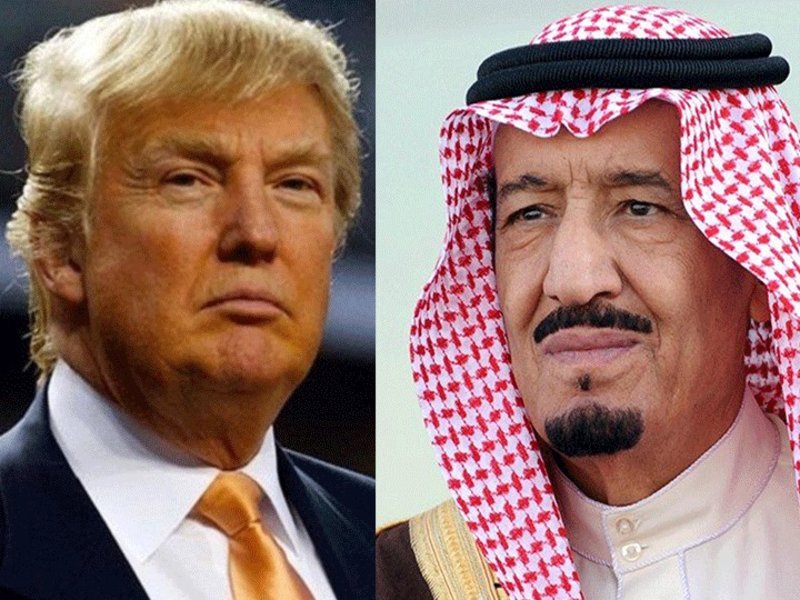When it comes to the United States, we have to remember reasons behind its strength. The “world’s superpower” is not simply a rhetoric term. It is the meeting point of the largest economy with the strongest military, aligned with universities embracing the future. It is an international reality that one cannot ignore or disregard.
We can even say that it has become a fateful reality in this specific era, and we ask ourselves: How to find the best language of cooperation with the US in order to avoid a negative coexistence with this reality?
America is present here, there and over there, in land, sea and air. A question inevitably arises on its role in the future of economies and guarantees of security and stability. But dancing with the US is not a simple matter. It is important to understand its language of interests and its decision-making mechanisms, in addition to the choices of the master of the White House and his views on his country’s interests and its role in the world.
We are writing about the United States because the Middle East is about to witness an unprecedented event in modern history; an event, which will influence the region and its thorny files for the few coming years. Those old and new files include terrorism, regional coup attempts, peace and stability, the restoration of the prestige of international borders, in addition to international cooperation and countering poverty and unemployment.
It cannot be overstated that, in the coming days, the eyes of the region and the world will turn to Riyadh, which will host a series of summits: a US-Saudi summit, a US-Gulf summit and an Arab-Islamic-US summit.
A very clear message lies in Donald Trump’s choice of his first official visits. The US president decided that Saudi Arabia would be his first destination in a tour that would also take him to Israel and the Vatican. It is a message on the importance of coexistence between religions and a response to those who call for hatred and repudiation.
Trump will use the Saudi window to address Arab and Muslims. He chose Saudi Arabia, which holds Arab and Islamic legitimacy, to meet with leaders from the Arab and Islamic worlds. A mutual opportunity lies in the meeting: an opportunity for Trump’s America to present its orientation and look for common grounds, and an opportunity for the Arab and Islamic worlds to reach for the US and build bridges with a president who was thought to initiate chaotic relations with both Arabs and Muslims.
It was only through extraordinary efforts deployed by Saudi Arabia since Trump took office in January that the series of summits could take place. Those efforts were based on an understanding of the important US role and the need to forge a solid agreement with it on the grounds of mutual interests. It is evident that those efforts have brought bilateral relations to the level of strategic partnership.
The series of summits underline the US awareness of the important role assumed by Saudi Arabia as a force of moderation inside the Arab and Islamic worlds. It stresses the unwavering power of Gulf States on the economic and political levels.
It also highlights the Kingdom’s role in countering terrorism by defeating extremist ideologies and launching intellectual and military wars to eradicate violence.
Over the past two years, Saudi Arabia has offered what is more important than fighting terrorism. It has followed the path towards change, development and economic transformation as a guarantee for prosperity and stability, besieging pretexts of extremists and fundamentalists. The main message behind this transformation is that improving the living conditions of millions of young people is an assurance for those who support internal stability and international cooperation.
The Arab-Islamic-US summit has also a strong significance. It highlights the Arab and Islamic stance towards the international arena. It confirms that the majority of the region’s population has chosen to build partnerships with the United States and work with it to fight terrorism and contain adventurous policies, especially when such partnerships are based on a deep understanding of mutual interests and sensitivities. The same summit sends an honest message to Iran and Russia.
Iran, which is currently busy with its presidential elections, should stop at the meaning of this extensive summit. The Arab majority is evident, so is the Islamic majority. Iran cannot survive if it remains in confrontation with these majorities. It should think about turning into a normal state: a country that respects international borders and does not attempt to expand its influence by infiltrating social fabrics under the pretext of defending minorities or ethnic groups…A natural state that respects international laws and communicate with other countries through embassies, not through militias.
Russia, for its part, should also thoroughly reflect on the consecutive summits in Riyadh. Obama’s era of the US fading role has ended. Trump’s America wants to regain the leadership position. The US is seeking to find true partners in countering terrorism and destabilizing policies…Partners in resolving the Israeli-Palestinian conflict.
Russia has to take into consideration the stance of the majority of Arab, Muslim and Middle Eastern leaders, highlighted in the Riyadh summit.
Success achieved by Moscow on the Syrian arena might turn against it should it continue to act against the majority, which is currently seeking a new partnership with Trump. Putin’s Russia should understand the message.
Riyadh’s summits are in fact summits of opportunities… Opportunities to find common interests; build bridges and consolidate economic and political cooperation.
The summits also send an important message to those who did not expect such events to take in the Middle East that fast.
